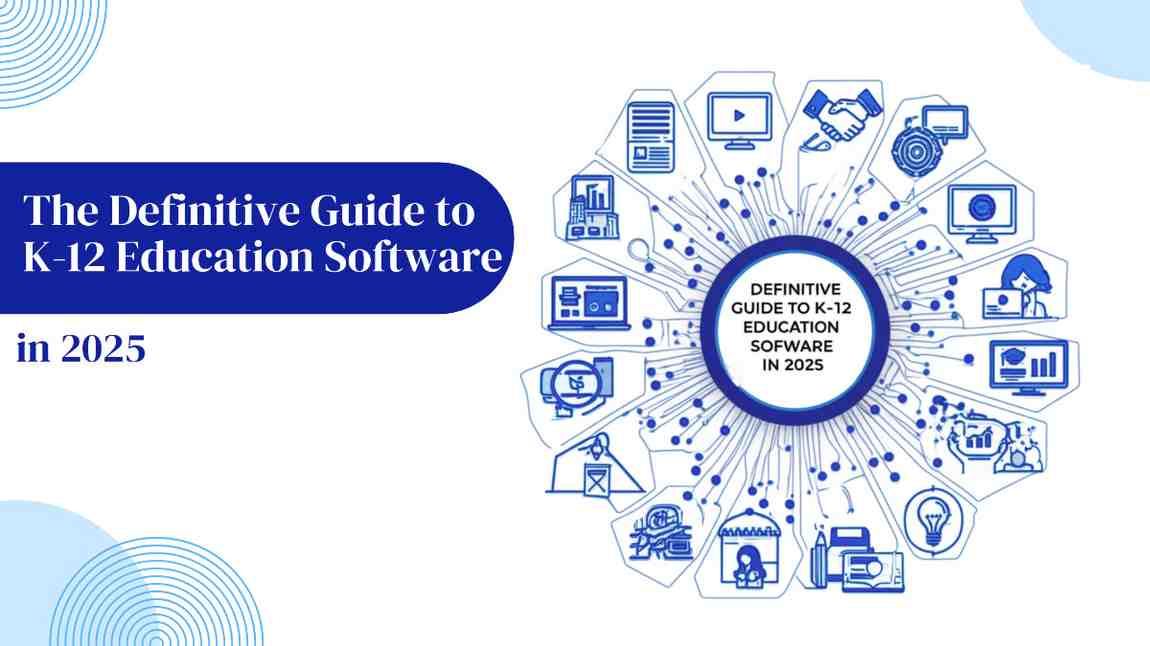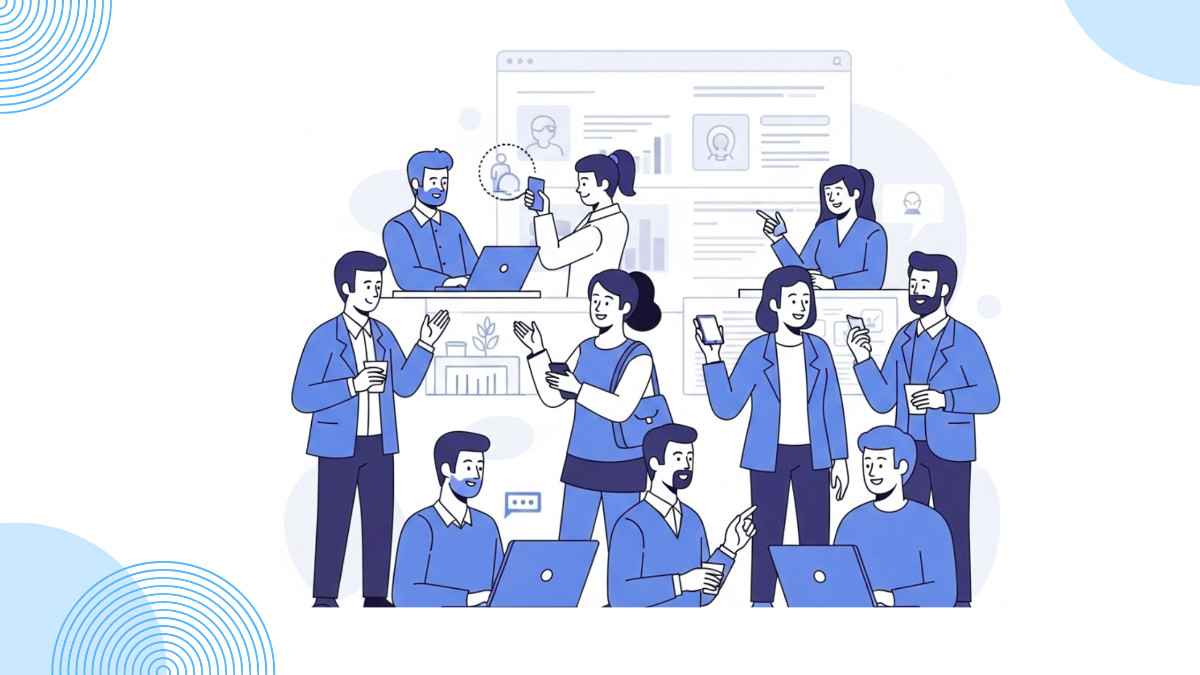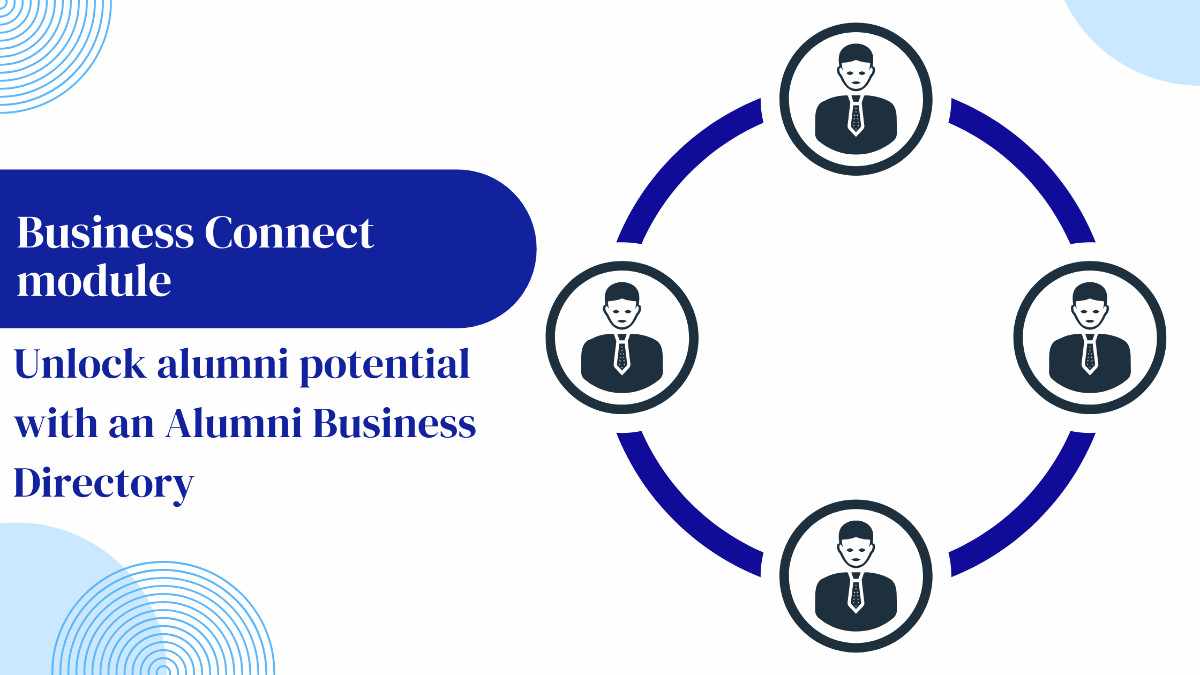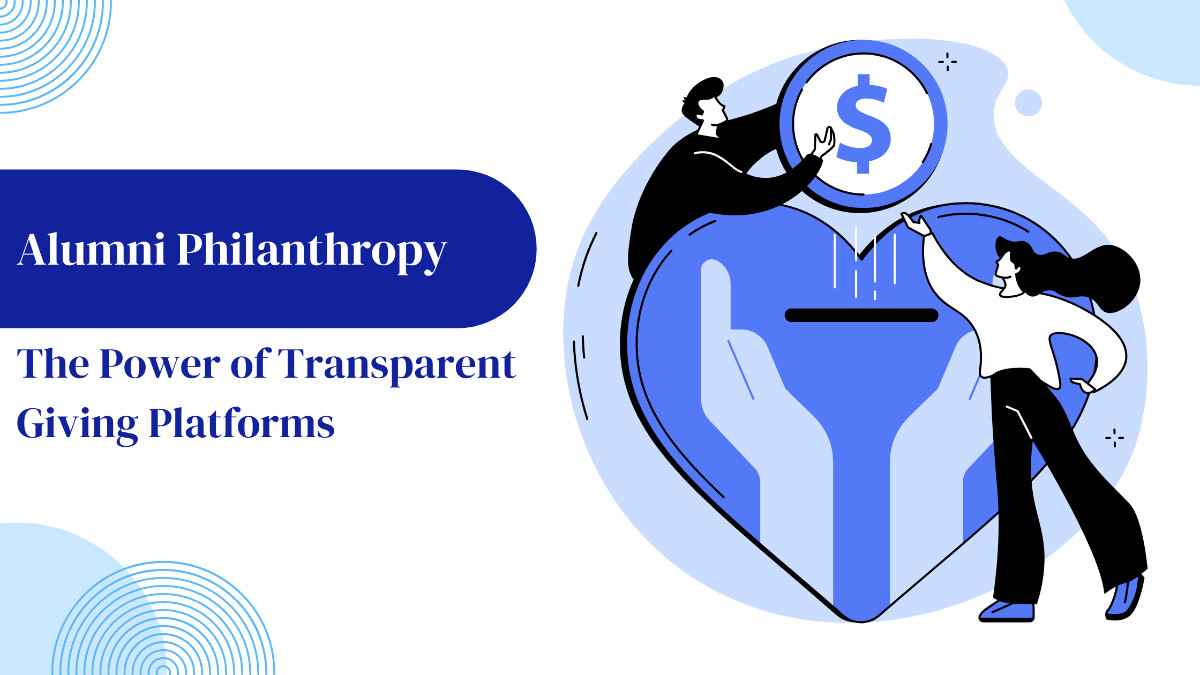The Definitive Guide to K-12 Education Software in 2025
Explore which are the best K-12 education software of 2025 and the trends transforming digital learning in schools.

In today’s fast-paced and hyper-connected world of education, K-12 schools are no longer limited to the delivery of instruction within the walls of a classroom. Education’s needs in today’s world extend far beyond the simple teaching. Schools must now make communication more easy, leverage data in strategic decision-making, offer flexible and customized learning paths, and establish long-term relationships with the community.
In this regard, K-12 school software has emerged as a significant tool. With the utilization of intelligent, cloud-based solutions in day-to-day activities, schools can improve teaching and learning, enhance efficiency, streamline processes, and establish stronger community bonds in the long run.
If you are a teacher who wishes to make things work better or a school administrator who wishes to boost student participation, employing the latest school software is no longer a choice — it is a requirement for delivering education that will continue to 2025 and beyond.
What is K-12 Education Software?
K-12 school software is a group of computer software and platforms that assist in organizing all the activities of a school from kindergarten through grade 12. The systems are integrated to assist teachers, administrators, parents, and students by automating activities, gathering information, and giving real-time communication.
Typically, these solutions aggregate and analyze:
- Maintain student records and attendance to document academic history accurately.
- Blended and online instruction for blended and fully online courses.
- Fee charging and payment systems help make transactions safe and smooth.
- Parent and alumni relations in order to establish relationships and openness.
- Learning, behavior, and monitoring progress for data-driven insights.
Why are Schools Investing in K-12 Software?
Contemporary schools are confronted with a rising list of pedagogical and operational challenges. They include remote and hybrid learning needs, data privacy law, secure record-keeping, and increasing demand for personalized learning. Traditional practices are unable to deal with them effectively.
K-12 school software addresses these problems by offering:
- Centralized data management is such that all messages, records, and grades are stored in a single secure system.
- Paperless processes to minimize waste and maximize sustainability.
- Live communication that binds teachers, parents, and students in real time.
- Individualized learning pathways tailored to the needs and learning styles of every student.
- Alumni networks to connect and remain in touch upon graduation.
The outcome is heightened productivity, improved learning outcomes, and a more cohesive school community.
The Main K-12 Software Categories
To understand how K-12 technology works, you need to know its main categories:
School Management Systems (SMS)
Maintain regular school activities — such as registering students, scheduling timetables, organizing transport, collecting school fees, and handling events.
Student Information Systems (SIS)
Maintain accurate school records, attendance, grades, and behavior reports so that there is a total picture of all students’ progress.
Learning Management Systems (LMS)
Offer online courses, assignments, testing, and track learning outcomes, making them a necessity in hybrid and online learning settings.
Enterprise Resource Planning (ERP)
Oversee back-end activities such as human resource, payroll, supply procurement, and accounting. ERP plays a critical role in ensuring school operations.
Most Distinguishing Features of Modern K-12 Software
New K-12 platforms are designed to assist teachers and school leaders and enhance the student experience. Some of the key features are:
- Integrated Student Records – Maintain attendance, grades, and performance information in a single master system.
- Automated Reports and Attendance – Generate reports in real-time and rapidly take attendance.
- Secure Online Payments – Allow parents to pay for fees online with automatic reminders.
- Parent-Teacher Communication Portals – Offer a dedicated portal for announcements, progress reports, and feedback.
- Computer-Based Testing – Create tests that accommodate various learning styles and permit speedy grading.
- Real-Time Dashboards – Provide data-driven insights specific to teachers and administrators.
- Role-Based Cloud Access – Provide secure, individualized access for students, parents, teachers, and alumni.
Alumni Interaction with AlmaShines
Most of the discussions on K-12 software revolve around student learning and school administration, but alumni involvement has much untapped potential. That is where AlmaShines differs.
AlmaShines assists schools in fostering long-term relationships with alumni by providing:
- Cloud-based alumni directories and engagement tracking
- Career development and mentorship programs facilitate bridging students with experience-holding alumni.
- More advanced search features by school, profession, or area.
- Online narrative informs us of graduates’ success and motivates current students.
- Brand-building activities to enhance school spirit and image.
With AlmaShines, schools transform the way they engage with alumni to assist with networking, career development, and community building.
The Top K-12 Software Platforms of 2025

How AlmaShines Enhances K-12 Education
AlmaShines re-imagines alumni outreach by allowing schools to:
- Establish global student-alumni networks of lifelong membership
- Provide career guidance and mentoring skills
- Maintain online alumni rolls that can be retrieved easily and securely.
- Discuss post achievement stories that build school spirit
- Build institutional brand and community loyalty
This converts alumni from passive viewers to active players in the growth and reputation of the school.
The Advantages of Utilizing K-12 Software
The impact of using appropriate software is extremely huge:
- Operational Efficiency – It automates the mundane work, freeing time for teaching and strategy
- Enhanced Learning – Facilitates adaptive instruction through the monitoring of student performance in real-time
- Parental Involvement – Assists parents in remaining informed and engaged in their child’s education.
- Data Security – Ensures confidentiality of sensitive papers and compliance with privacy regulations
- Stronger Community Connections – Builds long-term relationships with students, graduates, and parents.
K-12 Software Trends 2025
With education technology growing further, you can anticipate:
- AI-Powered Personalized Learning that dynamically adjusts to student requirements
- Mobile-First Learning Experiences for mobile learning on the move
- Online and blended learning is expanding with robust digital tools.
- Advanced Data Privacy and Compliance to address regulatory requirements
- Alumni Networking for Professional Development and institutional identity
Conclusion
In 2025, K-12 education demands innovation, flexibility, and an unwavering dedication to building interconnected communities. Those schools that embrace next-generation software — such as ERP, LMS, SIS systems, and alumni outreach platforms like AlmaShines — will be significantly favored.
These solutions make schools function better, create stronger learning experiences, and foster relationships that endure long after graduation. With education being both a service and a shared experience in today’s world, the right software keeps schools relevant, effective, and ready for the future.
Suggested Blogs
Let’s discuss the idea
Join hundreds of companies transforming their corporate communities with Almashines






